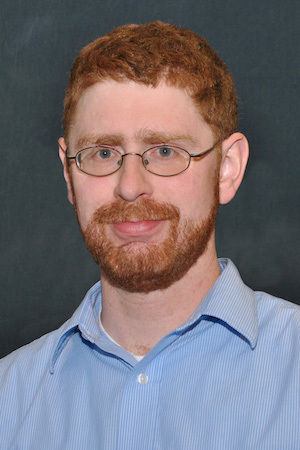UNIVERSITY PARK, Pa. — The raw numbers are staggering: nearly 87,000 courses have been added to the Credit Transfer Tool since 2016. More than 90% of reviewed courses have some type of equivalency at Penn State, and over 50% have a direct equivalency to a Penn State course.
Among the 200-plus faculty reviewers, three Penn State professors have completed nearly 20,000 of the transfer course reviews.
What this means for transfer students (and current students looking to transfer in credits) is the hard work completed at other institutions of higher education will translate into better quality credits at Penn State. For the academic discipline communities, this system ensures that courses are evaluated by faculty who are actively working in that field, thereby protecting the integrity of a Penn State education.
“The faculty reviewers have done such a tremendous job to work through the tens of thousands requests we send them,” said Michelle Rice, director of Prior Learning Assessment at Penn State. “We have many faculty who have served in these roles for a long time, who have helped us to establish a system that gets more efficient every year.”
Approximately 260 faculty serve on the review committees of transfer courses. The top three reviewers — in terms of total number of reviews — are Ronald Walker, Harold Hayford and Melanie Hetzel-Riggin. Many more reviewers are over the 1,000 mark.
For Hetzel-Riggin, professor of psychology at Penn State Behrend, course reviews are part of her morning work routine as she starts her day from her Erie, Pennsylvania, home. She has reviewed 6,599 courses as of late March and serves on five different review committees: educational psychology, human development and family studies, rehabilitation and human services, sociology and psychology.
Ronald Walker is an associate professor of mathematical sciences in the School of Science, Engineering and Technology at Penn State Harrisburg. He also serves as the associate program chair for the bachelor of science in mathematical studies. Walker has reviewed more transfer courses than anyone else at Penn State with 6,795 as of late March.
Harold Hayford, assistant teaching professor at Penn State Altoona, said that after a quarter century spent as an instructor, he’s still learning and involved in the development of curriculum. With 5,876 statistics and math courses reviewed, reviewing courses has allowed him to see the many ways that material is presented and how curriculum has evolved.
Course reviews begin with the student. If a student has completed a course at another institution and wants to transfer it into Penn State for credit, they can first see if the course has already been reviewed and entered into the Credit Transfer Tool. If it hasn’t, the student will submit whatever materials they have — usually a syllabus — to the Office of Undergraduate Admissions. Admissions sends the materials to the faculty review committee, who will analyze the materials and compare the material covered in Penn State courses.
Walker explained that reviewers are looking for breadth and depth.
“We want to get a measure of ‘What is the content of the course?’” he said. “What topics are they covering? And not only what topics, but at what depth?“
The best kind of syllabus for reviewers lays out all the content covered in the course. A 17-page syllabus that covers only policy, and has nothing about content: “Not particularly helpful,” Walker joked.
Hetzel-Riggin looks at the course description, book used and course schedule and spends much of her time in the Penn State Bulletin comparing descriptions. She said the method of collaboration and review varies across the five review committees she serves on.
Penn State provides some flexibility in regards to what can be considered an equivalent course, explained Hayford. Policy states that a transfer course must cover 80 percent of a Penn State course’s objectives and topics.
“Clearly, there are times that a course is lacking in some regards, but how much is it lacking?” Hayford said. “Is it close to the 80 percent threshold? Does it fall below 80 percent?”
Walker explained that course reviewing is about trying to strike a balance between helping students get quality credit for their work while making sure they are prepared for the more rigorous courses to come.
“We want to avoid redundancy, but we also do want to avoid a situation where they aren’t prepared for their next steps,” he said.
With multiple faculty on a committee looking at the same course, they can come to a consensus about how a course should be considered in terms of credit.
Rice called this work by professors a “game-changer” for its effects on helping students make progress in their degree while keeping the interpretation of curriculum with faculty.
“This is a service role,” Rice said. “It has huge benefits for our students, but also allows the different academic disciplines to be in control of the curriculum. When you look at the recommendations in higher-ed regarding transfer courses, Penn State is checking a lot of those boxes.”
A recent report from the American Council on Education National Task Force underscores the importance of evaluating transfer courses. "Of the 2.9 million undergraduate students who enrolled in fall 2019, the task force projects that roughly 1.1 million of them will transfer to another institution at some point over the next six years,” according to the report.
Aside from the benefits to students and the integrity of a Penn State education, all three reviewers said they get some value out of the act of reviewing itself. At Penn State Behrend, many course prefixes live in the same departments, but that can be drastically different at other campuses. This view, said Hetzel-Riggin, has given her insight into where the overlaps in curriculum are that might otherwise not be picked up.
“It’s really opened my eyes, how much there is overlap among some of the disciplines and how curriculum has developed in these different programs” Hetzel-Riggin said.
Hetzel-Riggin said reviews have helped her develop curriculum ideas and move forward based on what other institutions are doing.
“It’s helpful for me to be familiar with how the curriculum process is happening here,” said Hetzel-Riggin. “One of the things I really enjoy is seeing curriculum and getting different ideas.”
Academic disciplines will set their own rules in future
There is still much work left to do in the review of courses, and the work will likely never stop or slow. There are no good estimates on how many courses exist in just the U.S. The U.S. Department of Education recognizes more than 4,000 colleges and universities, and curriculum is always changing.
Rice said it will be up to each academic discipline at Penn State to decide how long their course equivalency decisions are good for in the Credit Transfer Tool before those courses have to be reviewed again.
“Just because [a course] was reviewed 20 years ago, doesn’t mean it’s the same,” Walker said. “Courses are not static. Course catalogs are not static.”
With transfer courses a permanent part of the education landscape, Hayford agreed that review by faculty and decisions made within each discipline help keep the curriculum in the hands of educators.
“We’re fortunate at Penn State that curriculum is in the hands of the faculty,” Hayford said. “This is a kind of assurance that this is the case, and we’re looking for that to continue.”
Prior Learning Assessment is part of the Penn State Office of Undergraduate Education, the academic administrative unit that provides leadership and coordination for University-wide programs and initiatives in support of undergraduate teaching and learning at Penn State. Learn more about Undergraduate Education at undergrad.psu.edu.


